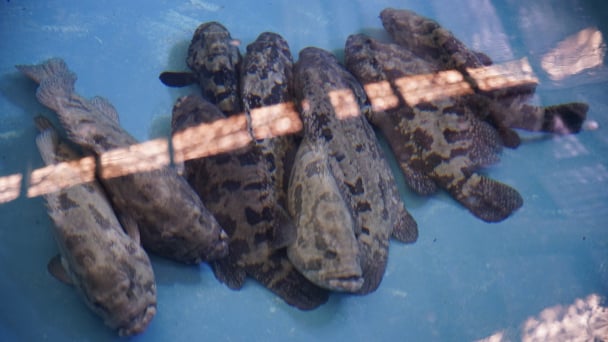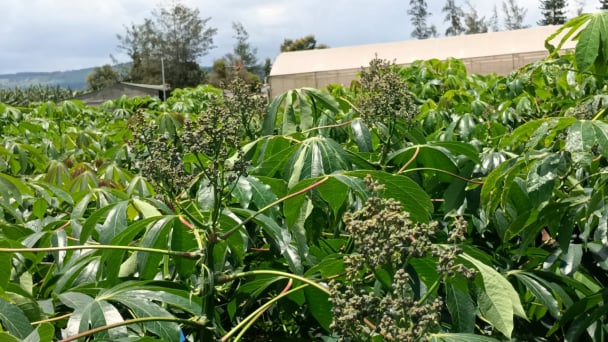May 18, 2025 | 01:53 GMT +7
May 18, 2025 | 01:53 GMT +7
Hotline: 0913.378.918
May 18, 2025 | 01:53 GMT +7
Hotline: 0913.378.918

Corn is a food crop that holds a particularly important position in the structure of crop production, with the second largest area after rice.
Corn is an essential part of the Vietnamese crop production system, with the second-largest cultivation area following rice. In recent years, domestic maize production has made significant strides, particularly in the areas of hybrid corn breeding research, cultivation techniques, seasonality, technology, and market development.
Corn is, however, primarily farmed in regions with limited water resources, inadequate soil nutrients, rugged terrain, and mountainous regions. Vietnam's corn production is still fragmented and small-scale, with a low mechanization rate, an underdeveloped post-harvest technology, and inefficient fertilizer use that results in waste, all of which lower the overall effectiveness of corn production. Additionally, Vietnam continues to import a substantial quantity of maize kernels annually for the production of animal feed, as domestic corn production has not yet met the local demand.
Dr. Dinh Cong Chinh, citing statistics from 2015 to 2023, observed that the corn cultivation area decreased from nearly 1.2 million hectares to 884,000 hectares. The yield in 2015 was 4.48 tons per hectare; however, by 2023, it had only slightly increased to 5.02 tons per hectare.
“The average corn yield has not improved significantly! These are numbers that need to be discussed to find a more optimal way. Genetically modified corn is very good, there should be plans to widely apply them to improve productivity”, a representative of the Department of Crop Production assessed.

Dr. Dinh Cong Chinh (Department of Crop Production, Ministry of Agriculture and Rural Development). Photo: Tung Dinh.
MARD (Department of Crop Production) has recognized a total of 31 genetically modified corn (GMO) varieties as of September 30, 2024. This includes 30 GMO corn varieties that are derived from recognized parent lines under Circular 29 on silviculture measures and one GMO corn variety that is recognized under the Law on Crop Production and Decree 94, which guides the law on crop varieties and cultivation.
Proactively working with provincial Departments of Agriculture and Rural Development and Agricultural Promotion Centers in critical corn-growing regions, the majority of enterprises established demonstration models of GMO corn varieties following their official recognition.
These units conducted workshops, field evaluations, and model summaries prior to the construction of these models, organizing training and technical consulting for the planting of GMO maize at nearly all demonstration sites.
According to reports from companies, in the 10 years since 2015 (when the first GMO corn variety was recognized until September 30, 2024), a total of 13,256 tons of GMO corn seeds have been imported out of 72,141 tons of corn seeds (accounting for 22.5% of total imported seed volume), equivalent to 662,000 hectares of planted area (excluding the volume of domestically produced GMO corn seeds not reported to the Department).
All GMO corn varieties that are imported are planted in ecological regions that are recognized and contain genes that are resistant to Lepidoptera pests, including stem borers, ear borers, and tassel borers.
Dr. Dinh Cong Chinh cited local preliminary assessments, observing that these GMO varieties were well-suited to seasonal structures in Vietnam's corn-growing areas and exhibited robust growth. This was due to the genetic similarity between GMO corn and its parent lines in terms of key morphological characteristics.

It is necessary to organize a detailed assessment of the areas, seasons and land under high pressure from pests and vice versa to develop the most effective GMO corn development plan.
The use of GMO corn varieties showed clear resistance to pest groups for which they were genetically modified in crops and regions with significant Lepidoptera pest pressure.
In contrast, the pest resistance traits of GMO corn varieties were not as apparent in regions that experienced little pest pressure from stem borers. In comparison to traditional and local parent varieties, the economic benefits in these regions were also unclear, as the cost of GMO corn seeds was higher.
In crops and regions with high pest pressure, GMO corn varieties produced higher average yields than traditional varieties in terms of yield and quality. The quality of commercial kernels was also higher to that of traditional varieties, as they were less susceptible to fungal diseases and stem borers.
However, in regions with minimal pest pressure, GMO corn did not exhibit significantly higher average yields than traditional varieties, and the quality of commercial kernels was comparable to that of traditional varieties.
As a critical crop in the process of crop structure transformation, Department of Crop Production has identified maize (including sweet corn, biomass corn, and grain corn). There is a necessity for comprehensive, systematic, and long-term assessments of the effects of the widespread and extended use of GMO corn varieties.
The representative of the Department of Crop Production suggested that seed supply units should establish a close partnership with the provincial Departments of Agriculture and Rural Development to collect precise data regarding zoned areas and large-scale, specialized maize production regions shortly. This coordination will facilitate the planning of medium- and long-term development.
Carry out meticulous evaluations of regions, growing seasons, and soil types facing high pest pressure, as well as those with lower pest intensity, to formulate a highly efficient development strategy for GMO corn. It is essential to continue enhancing tailored cultivation techniques for each specific variety, season, ecological zone, and soil condition prone to stem borer and weed infestations.
Mr. Chinh also emphasized that in the near future, priority should be given to crafting and implementing an elaborate resistance management plan tailored to each transgenic event.
Translated by Linh Linh

(VAN) 14 out of 35 domesticated elephants in Dak Lak province have had their living conditions improved, with 11 of them currently participating in the non-riding elephant tourism model.

(VAN) Muong Nhe Nature Reserve hopes that being upgraded to a national park will lay the foundation for forest protection efforts to be carried out in a systematic, modern, and sustainable manner.
/2025/05/16/3923-2-171845_52.jpg)
(VAN) Lower costs, higher yields, and improved soil quality are outstanding benefits that soybeans bring when integrated into the crop rotation system.

(VAN) The 'For a Green National Environment' programme aims to promote a green lifestyle, support businesses in implementing ESG practices, and turn Net Zero commitments into concrete actions.

(VAN) Cold-barn systems efficiently manage environmental and temperature conditions, which aids in the prevention of respiratory diseases in pigs and protects them from the vectors that transmit African swine fevers.

(VAN) To tackle challenges, the project 'Addressing key technical bottlenecks in the grouper supply chain in Vietnam' has been underway since 2024.

(VAN) The project 'Disease-Resilient and Sustainable Cassava Production Systems in the Mekong Region', funded by the Australian Center for International Agricultural Research (ACIAR), is being implemented from 2024 to 2028.